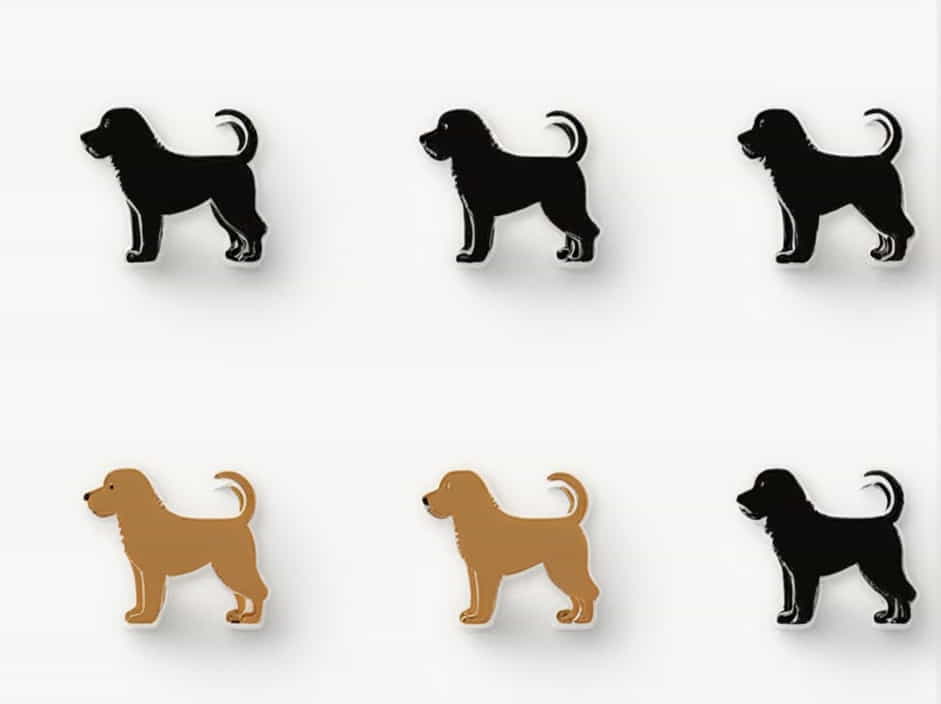When it comes to dogs, size matters—especially for those who love giant dog breeds. Some dogs grow to massive heights and weights, making them stand out as gentle giants. But which breed holds the title of the largest dog breed in the world?
In this topic, we’ll explore the biggest dog breeds, their characteristics, and what it takes to care for these giant companions.
What Defines the Largest Dog Breed?
When talking about large dog breeds, we usually look at two factors:
- Height: Measured from the ground to the shoulders (also called the withers).
- Weight: Some dogs may not be the tallest, but they can be incredibly heavy.
The Great Dane is often considered the tallest dog breed, while the English Mastiff holds the record for the heaviest dog breed.
The Largest Dog Breeds in the World
Here are some of the biggest dogs by height and weight:
1. Great Dane – The Tallest Dog Breed
- Height: 28-34 inches (71-86 cm)
- Weight: 110-200 pounds (50-90 kg)
- Lifespan: 7-10 years
The Great Dane is famous for its towering height and elegant build. These dogs are often called “Apollo of Dogs” because of their majestic appearance. The tallest dog ever recorded, Zeus, was a Great Dane who stood 44 inches (112 cm) tall.
Despite their size, Great Danes are friendly, affectionate, and great family pets. They require plenty of space but can be surprisingly gentle indoors.
2. English Mastiff – The Heaviest Dog Breed
- Height: 27-32 inches (69-81 cm)
- Weight: 120-230 pounds (54-104 kg)
- Lifespan: 6-10 years
If you’re looking for the heaviest dog breed, the English Mastiff holds the record. A mastiff named Zorba weighed 343 pounds (156 kg), making it the largest dog ever recorded by weight.
English Mastiffs are loyal, protective, and affectionate. They are often called gentle giants because of their calm and loving nature.
3. Saint Bernard – The Mountain Giant
- Height: 25-30 inches (63-76 cm)
- Weight: 120-180 pounds (54-82 kg)
- Lifespan: 8-10 years
Originally bred for rescue work in the Swiss Alps, Saint Bernards are strong, muscular dogs with thick fur. They are gentle, affectionate, and great with children, making them excellent family pets.
However, they drool a lot and require regular grooming due to their thick coat.
4. Irish Wolfhound – The Tall and Graceful Hunter
- Height: 30-35 inches (76-89 cm)
- Weight: 105-180 pounds (48-82 kg)
- Lifespan: 6-8 years
The Irish Wolfhound is one of the tallest dog breeds, often reaching Great Dane-like heights. Originally bred for hunting wolves in Ireland, this breed is known for its speed, agility, and strength.
Despite their hunting background, Irish Wolfhounds are calm, friendly, and affectionate. However, they have a short lifespan and require a lot of food and exercise.
5. Newfoundland – The Swimming Giant
- Height: 26-28 inches (66-71 cm)
- Weight: 100-150 pounds (45-68 kg)
- Lifespan: 8-10 years
The Newfoundland is a powerful swimmer known for its lifesaving instincts. These dogs have thick, water-resistant coats and webbed feet, making them excellent water rescue dogs.
Newfoundlands are gentle, sweet-natured, and incredibly loyal. They make great family pets but need regular grooming to maintain their fluffy coats.
6. Tibetan Mastiff – The Fluffy Guardian
- Height: 24-30 inches (61-76 cm)
- Weight: 70-160 pounds (32-73 kg)
- Lifespan: 10-15 years
The Tibetan Mastiff is a rare, ancient breed originally used to guard livestock in the Himalayas. These dogs are independent, strong-willed, and highly protective.
Because of their thick fur, they thrive in cold climates but may struggle in hot weather. They are not ideal for first-time dog owners due to their strong-willed nature.
Caring for Giant Dog Breeds
Owning a large dog breed comes with special responsibilities. Here’s what you need to know:
1. Space and Living Conditions
- Large dogs need plenty of space to move around.
- Apartments may not be suitable for some giant breeds.
- A secure yard is recommended for breeds like Mastiffs and Wolfhounds.
2. Exercise Requirements
- Giant dogs require daily exercise to stay healthy.
- Short walks and low-impact activities are better for breeds prone to joint issues.
- Swimming is a great exercise for large dogs like Newfoundlands.
3. Diet and Nutrition
- Large breeds require high-quality food rich in protein and essential nutrients.
- Overfeeding can lead to obesity, so portion control is crucial.
- Feeding them in raised bowls may help prevent bloating and gastric torsion.
4. Health Concerns
- Hip dysplasia is common in large breeds.
- Bloating (gastric torsion) can be life-threatening, especially in Great Danes and Mastiffs.
- Joint problems may develop as they age, requiring special supplements and care.
5. Grooming Needs
- Short-haired breeds like Great Danes require minimal grooming.
- Long-haired breeds like Newfoundlands and Saint Bernards need regular brushing.
- Many giant breeds drool, so keeping a towel handy is a good idea.
Is a Giant Dog Breed Right for You?
Before adopting a giant dog breed, consider the following:




The largest dog breeds are not only impressive in size but also gentle, loyal, and loving companions. Whether you prefer the towering Great Dane, the massive English Mastiff, or the fluffy Newfoundland, these dogs require dedicated care, space, and proper training.
If you’re ready to handle the responsibilities of owning a giant breed, they can be some of the most rewarding pets you’ll ever have.
